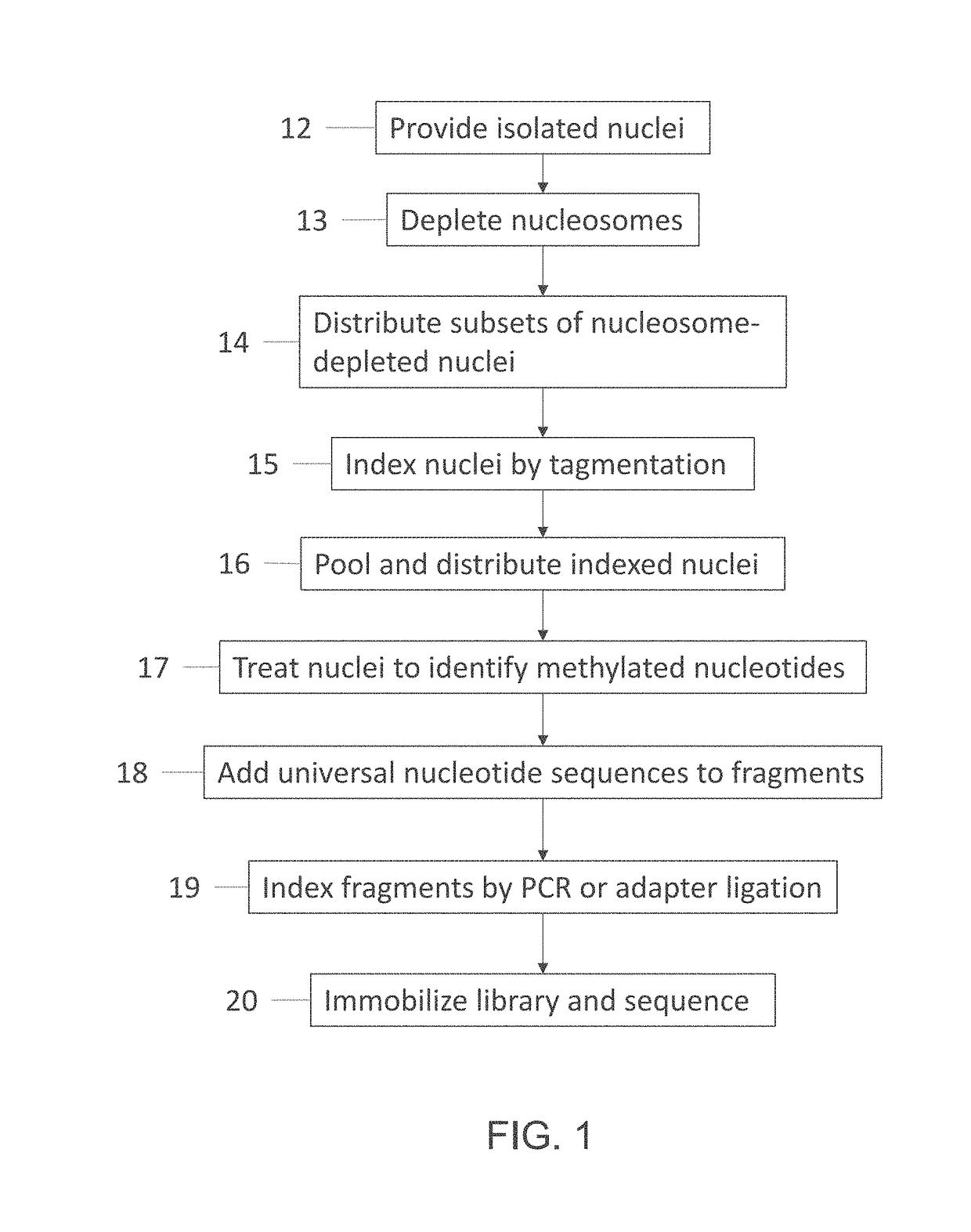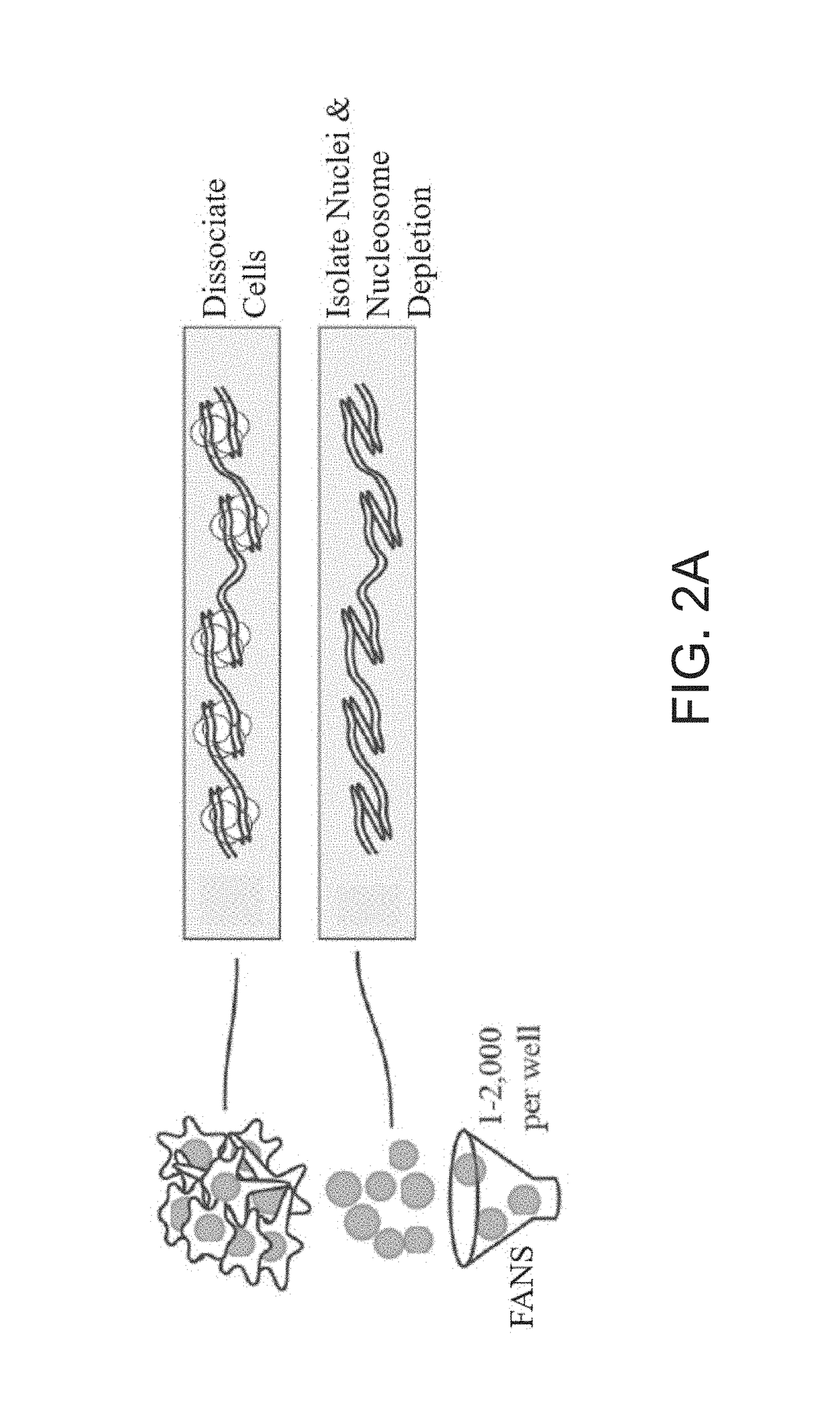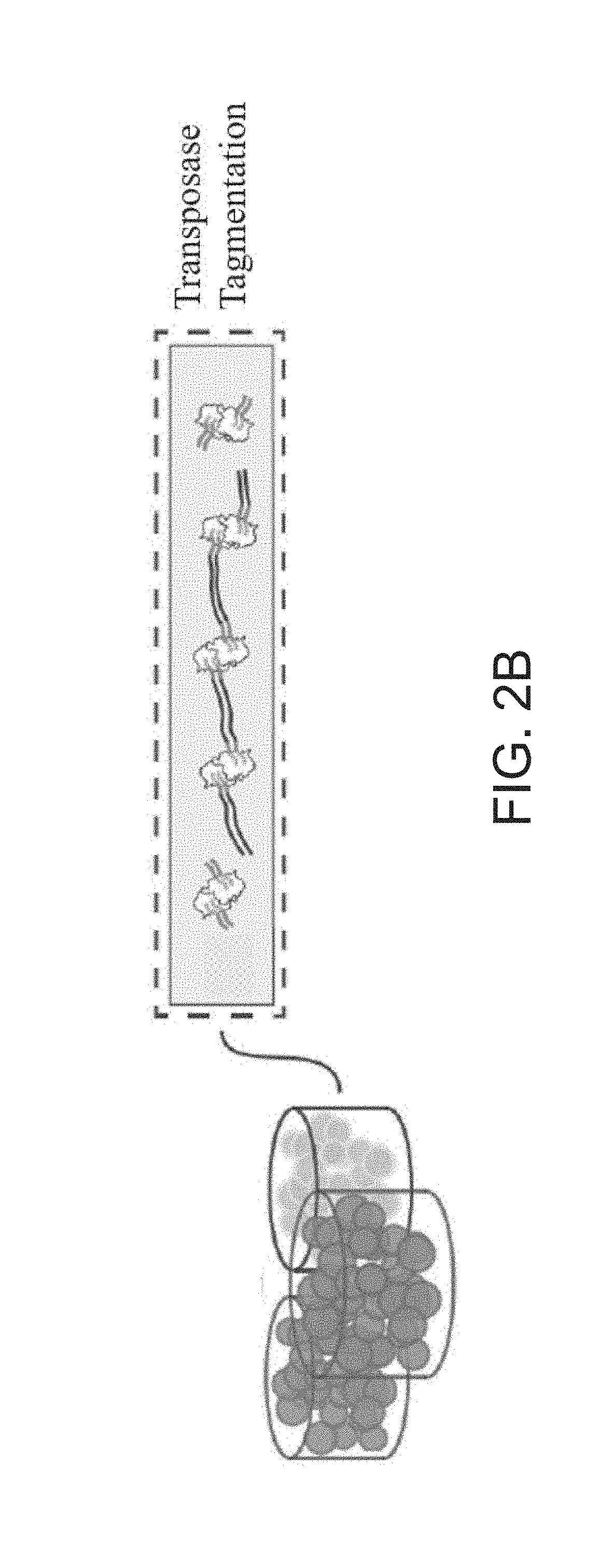Single cell whole genome libraries for methylation sequencing
a single cell, whole genome technology, applied in the field of single cell, can solve the problems of linear scaling of costs for each additional cell, lack of scalability of methods, and no droplet- or chip-based microfluidics system deployed, etc., to achieve fewer noise reads, increase efficiency, and increase alignment rate
- Summary
- Abstract
- Description
- Claims
- Application Information
AI Technical Summary
Benefits of technology
Problems solved by technology
Method used
Image
Examples
example 1
Preparation of Unmethylated Control Lambda DNA
[0170]One hundred nanograms of unmethylated Lambda DNA, 5 uL of 2×TD Buffer, 5 uL NIB buffer (10 mM Tris-HCl pH7.4, 10 MM NaCl, 3 mM MgCl2, 0.1% Igepal®, lx protease inhibitors), and 4 μL, 500 nM of uniquely indexed cytosine-depleted transposome were combined. The mixture was incubated for 20 minutes at 55° C., and then purified using QIAquick® PCR Purification column and eluted in 30 μL of EB.
[0171]The concentration of DNA was quantified with a dsDNA High Sensitivity Qubit 2.0 Fluorometer using 2 uL of the mixture. The concentration was diluted to 17.95 pg / uL, which simulates the genomic mass of roughly 5 human cells.
example 2
Preparation of 18% PEG SPRI Bead Mixture
[0172]Sera-Mag beads (1 ml) were aliquoted to a low-bind 1.5 mL tube, and then placed on a magnetic stand until supernatant is cleared. The beads were washed with a solution of 500 uL 10 mM Tris-HCl, pH 8.0, and the solution removed after the supernatant cleared, and this wash step was repeated for a total of four washes. The beads were resuspended in the following mixture: 18% PEG 8000 (by mass), 1M NaCl, 10 mM Tris-HCl, pH 8.0, 1 mM EDTA, 0.05% Tween-20; incubated at room temperature with mild agitation for at least an hour, and then 18% PEG SPRI beads were stored at 4° C. The beads were allowed to reach room temperature before use.
example 3
Preparation of Nuclei Using Lithium 3,5-diiodosalicylic acid (LAND) or SDS (xSDS)
A. LAND Method of Nuclei Preparation & Nucleosome Depletion
[0173]If the cells were in a suspension cell culture, the culture was gently triturated to break up cell clumps, the cells were pelleted by spinning at 500×g for 5 minutes at 4° C., and washed with 500 μL ice cold PBS.
[0174]If the cells were in an adherent cell culture, media was aspirated and the cells washed with 10 mL of PBS at 37° C., and then enough 0.25% Trypsin at 37° C. was added to cover the monolayer. After incubating at 37° C. for 5 minutes or until 90% of cells were no longer adhering to the surface, 37° C. media was added at 1:1 ratio to quench Trypsin. The cells were pelleted by spinning at 500×g for 5 minutes at 4° C., and then washed with 500 μL ice cold PBS.
[0175]The cells from either suspension cell culture or adherent cell culture were pelleted by spinning at 500×g for 5 minutes, and then resuspended in 200 μL 12.5 mM LIS in N...
PUM
| Property | Measurement | Unit |
|---|---|---|
| temperature | aaaaa | aaaaa |
| diameter | aaaaa | aaaaa |
| concentration | aaaaa | aaaaa |
Abstract
Description
Claims
Application Information
 Login to View More
Login to View More - R&D
- Intellectual Property
- Life Sciences
- Materials
- Tech Scout
- Unparalleled Data Quality
- Higher Quality Content
- 60% Fewer Hallucinations
Browse by: Latest US Patents, China's latest patents, Technical Efficacy Thesaurus, Application Domain, Technology Topic, Popular Technical Reports.
© 2025 PatSnap. All rights reserved.Legal|Privacy policy|Modern Slavery Act Transparency Statement|Sitemap|About US| Contact US: help@patsnap.com



